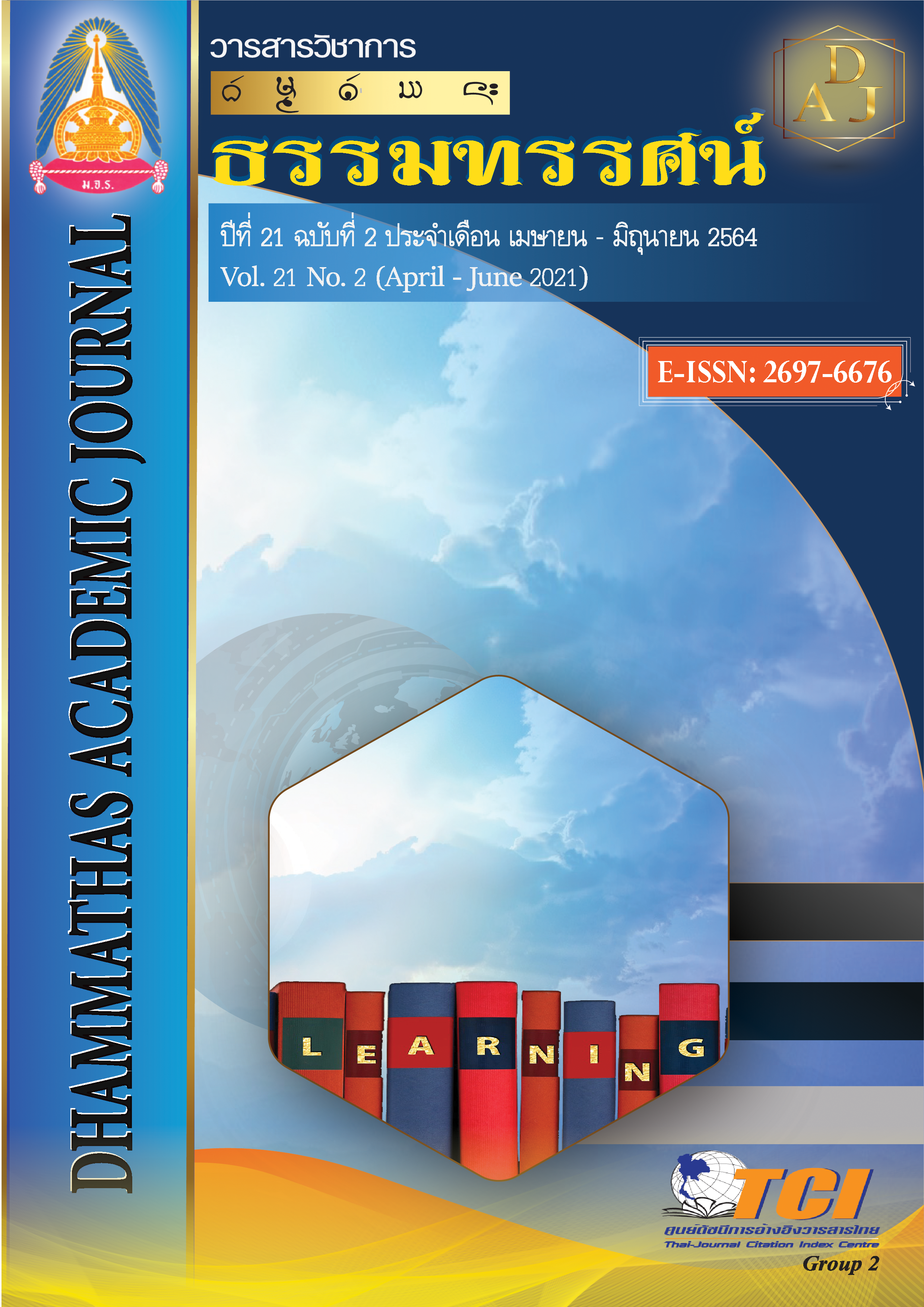Lakban Lakmuaeng: Process Community Development for Sustle Stability
Main Article Content
Abstract
The aims of this research were: 1) to study the history and development of Lakban Lakmueang, 2) to study the community development process in relation to the beliefs of the Lakban Lakmuaeng in the northeast region. This was a qualitative research, collecting and analyzing data from participatory observations and structured in-Depth interviews, from the target group 30 Buddhist Scholars of the study area and present the study results with a descriptive method.
The results of study revealed that: the Lakban Lakmueang created from Buddhist provisions in Vinaya (discipline) on bringing stone for making boundary maker. It was influenced by the shape of the Pala-Sena period of India. It has been developed from the concept of a stone carving of the Sema Dhamma cakra pillar in the period of king Ashoka, the great. It begun in Tawarawadi, Sukho Thai, Ayutthaya and Rattanakosin kingdoms.
The Lakban in the northeastern region, there has been developed of motto and concept towards art models that related to people. It is the peg(pin) to setting up a village and a spiritual center for setting up a village that is related to the heat of the sacred village. Later, the villagers brought their beliefs in Buddhism to increase the sanctity of the Lakban. In addition, the Lakban. in the research area also has a wide variety of materials, and art model found at Ban Dongphong area, Sila sub-district and Ban Nongtum, Nongtum, sub-district, Mueang district, Khon Kaen province.
The Lakmuaeng (city pillar) in the northeast area, there has been a development of motto and concept towards art model of people that related to people. It is the center of people's minds at the city level. And the conceptual development comes from the Lakban (village pillar) principle as well as the development of the concept of using auspicious wood material with a name and meaning related to the city in order to be a city landmark which the phenomenon of setting up the main wooden pillar found at the Ban Dongphong area, Sila sub- district and Ban Nongtum area Nongtum, sub-district, Muesng District, Khon Kaen province.
Article Details
References
ชยาภรณ์ สุขประเสริฐ, พระครูศรีปัญญาวิกรม และไว ชึรัมย์. (2560). เสมา: ประวัติศาสตร์ คุณค่าและการจัดการการอนุรักษ์ขององค์กรพระพุทธศาสนาในจังหวัดบุรีรัมย์. วารสารสถาบันวิจัยและพัฒนา มหาวิทยาลัยราชภัฏมหาสารคาม, 4(1), 135-153.
ดนุพล ไชยสินธุ์ และรำเพย ไชยสินธุ์. (2529). ใบเสมาหินวัดพัทธสีมารามหลักฐานทางโบราณคดีที่สำคัญของเมืองเลย. เลย: ศูนย์วัฒนธรรม จังหวัดเลย.
ประยูร อุลุชาฎะ. (2520). ศิลปะแห่งอาณาจักรไทยโบราณ. กรุงเทพฯ: โอเดียนสโตร์.
พระมหานิกร ปลัดสังข์ และวิษณุ สุมิตสวรรค์. (2560). การรักษาศีล 5 กับการสร้างสันติสุขในสังคมไทยให้ยั่งยืน กรณีศึกษาหมู่บ้านรักษาศีล 5 ในจังหวัดขอนแก่น. วารสารบัณฑิตศึกษาปริทรรศน์, 13(3), 43-56.
พระมหาสมศักดิ์ ธีรวํโส (แหวนคำ). (2562). กระบวนการพัฒนาชุมชนเมืองและชนบทสู่ความยั่งยืน ในอำเภอเชียงคำ จังหวัดพะเยา. (วิทยานิพนธ์พุทธศาสตรมหาบัณฑิต). พระนครศรีอยุธยา: มหาวิทยาลัยมหาจุฬาลงกรณราชวิทยาลัย.
พระศรีสัจญาณมุนี, ปรธภร ปุระกัน และพูนศักดิ์ กมล. (2563). การศึกษาคุณค่าใบเสมาเพื่อสร้างกระบวนการเรียนรู้ด้านพุทธจริยธรรมในภาคตะวันออกเฉียงเหนือ. วารสารสังคมศาสตร์และมานุษยวิทยาเชิงพุทธ, 5(2), 108-122.
ไพฑูรย์ มีกุศล. (2528). ประวัติศาสตร์ไทยสมัยต้น. (พิมพ์ครั้งที่ 3). ม.ป.ท.: ม.ป.พ.
วิบูลย์ ลี้สุวรรณ. (2525). ศิลปะน่ารู้ในสองทศวรรษ. กรุงเทพฯ: พิฆเณศ.
ศรีศักร วัลลิโภดม. (2522). เขตสะสม ก่อนพุทธศตวรรษที่ 19 ในอีสานเหนือ. วารสารเมืองโบราณ, 6(1), 29-37.
สุชีพ ปุญญานุภาพ. (2541). คุณลักษณะพิเศษแห่งพระพุทธศาสนา. (พิมพ์ครั้งที่ 2). กรุงเทพฯ: มติชน.
สุรพล ดำริห์กุล. (2521). วัฒนธรรมสมัยก่อนประวัติศาสตร์ในเขตลุ่มน้ำเลยตอนต้น. กรุงเทพฯ: ศิลปากร.
เสรี พงศ์พิศ. (2536). ภูมิปัญญาชาวบ้านกับการพัฒนาชนบท. กรุงเทพฯ: อมรินทร์พริ้นติ้งกรุ๊ป.

